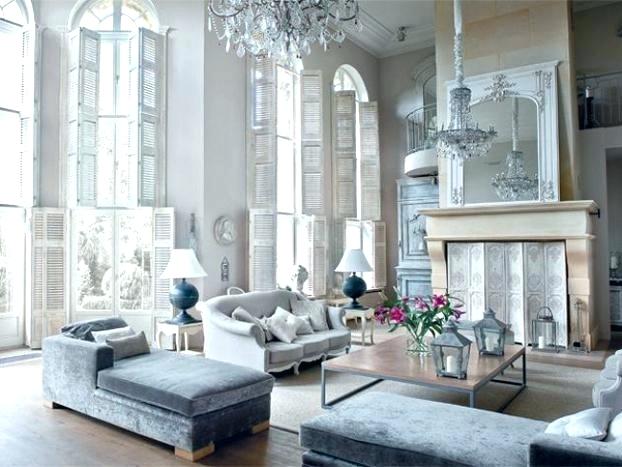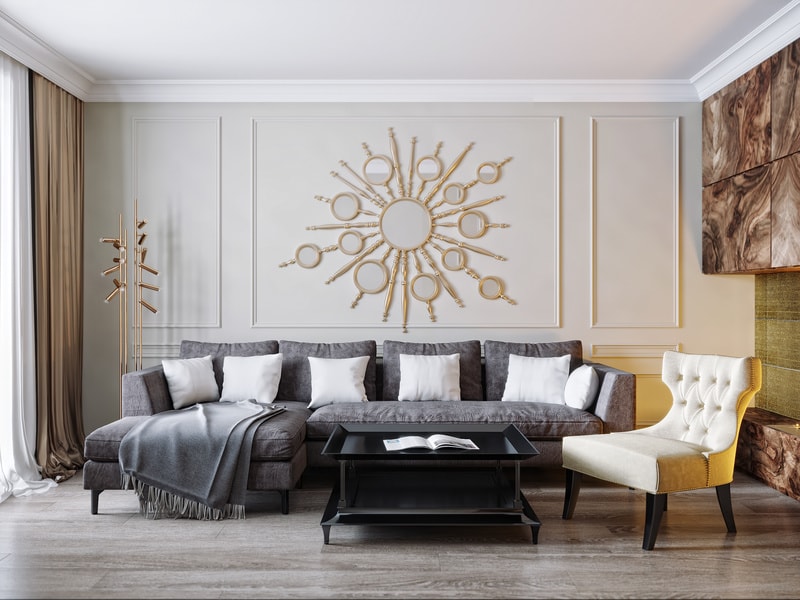
Classic originates in Ancient Greece (end of III-II thousand B.C. – 150-30 B.C.). For the ancient Greeks, the visual effect and external harmony of the living environment were as important as the ergonomics. In modern classics, both functionality and harmony of proportions in space are equally important.
“The first thing that defines a room’s character is its size. The second is the purpose. The third is the interior, which in harmony with the architectural solution, is designed to correct the shortcomings, emphasize the merits and create an illusion,”.
The maestro created interiors in the spirit of classic Italian Palazzos. The secret of their elegance lies in the aesthetic unity of architecture, decor and furniture.
Classic layout
Houses of the French bourgeoisie of the XVII-XVIII centuries represented an enfilade of rooms leading one to the other, blocked by French windows, with the function of a door.
The layout of these houses, and later of the apartments of the end of the XIX century, designed in the spirit of Ottoman, obviously influenced the design of French windows: they, like the doors, open inward, allowing the beauty of nature from the outside.
Combination of styles in the interior of modern classics
The interior will only win if it combines finishing materials, decor and furniture of different eras and styles. For example, in the classic shell of the room can be placed antique furniture of the XIX century and modern 50s of XX century.
French Empire
The French Empire is the basic style from which the style of modern classics originates. The luxury of the French Empire was to the taste of the British, who in the days of the English Regency, gladly accepted it.
Something the British emphasized from the culture of Ancient Rome, and therefore (given the continuity of traditions) from the culture of Ancient Egypt and ancient Hellende. Doric and Ionic warrants became obligatory elements of architecture and furniture design of classical English style.
Chairs in the form of klismos, lacquered rosewood and ebony, marble bronze busts and statues of ancient heroes – all of this has taken a strong place in English culture.
Palladian style
Andrea Palladio was one of the first to instill in Western European architects a love of symmetry and harmony. Palladio was inspired by Roman antique architecture.
At first Andrea Palladio’s work was reminiscent of that of architect Donato d’Angelo Bramante (1444-1514), who created during the heyday of the High Renaissance.
Later, the architect drew inspiration from the works of Michelangelo and his contemporaries – adherents of mannerism. In 1549, in Vincenz in northern Italy, Andrea Palladio built the Basilica, many palaces and the Olympic Theatre, modeled in the spirit of ancient theaters.
Villa “Rotunda” (or Capra), built around 1550 near Vicenza, is the pinnacle of the architect’s work. The portico of the main entrance to the villa is repeated on the other three sides of the building. Such symmetry in combination with simple mathematically calculated proportions is the main advantage of the monument of architecture.
After the publication of Palladian treatise “Four Books on Architecture” in 1570, the Palladian style in architecture was created. It is characterized by strict symmetry, monumentality and academism in the use of classical forms. And this direction has taken root not only in Italy. Palladian is considered to be English architecture of the XVIII century.
The English architecture of the given period has inherited traditions as Palladian, and Inigo Jones (1573-1651), who has constructed in England many buildings of an epoch of blossoming of the High Renaissance. To this day, majestic Palladian pitchforks can still be seen in rural Britain.
The layout of modern classics
The main requirement for elegance in the style of modern classics is the rhythm of the visual series, a balanced and harmonious combination of elements. When redesigning the house the designer proceeds from the peculiarities of personality and everyday needs of people living here.

However, over time, the lifestyle, tastes and situations of the inhabitants of the house may change, then there are new requirements for housing. For example, a family of 6 will be uncomfortable in an open-plan 50-metre space. The right architectural solution gives a person freedom of movement in space.
Composition in the interior of modern classics
“Proportions are the most important thing. Without them there is no harmony and symmetry” – this is how Robert Morris, an expert in architecture, wrote in 1751.
The interior is akin to still life, perhaps, in the perfection of composition. In clothing, fine arts and interiors, the inclusion or exclusion of individual details can disturb the overall harmony or bring to naught a carefully thought-out composition.
Furniture
In ancient Greece and Rome, furniture legs often imitated the feet of animals and birds with hooves or claws. So-called diphros – chairs on four curved legs (Roman invention) – were often made of bronze, with legs decorated with volutes.
Since ancient times decorative legs of furniture became an integral element of classical and then neoclassical interiors. Chairs Klimos, spread in Ancient Greece and Rome, in the transformed form of migrated to modernity. Classicism has survived centuries and still inspires designers.
Tables – low wooden – were made in Ancient Egypt. In Ancient Rome they became higher. In the Middle Ages, round tables appeared.
Beds with legs began to make in the XIV century. They were certainly supplied with a wooden headboard and two footrests.
Masters of redwood Directory (Le style Directoire 1795-1799) (this style was formed under the influence of the style of Louis XVI) clearly caught the trend towards simplification.
In the manufacture of furniture, they abandoned the excessive decor, used motifs of the Pompeian style, ancient Egyptian art and created their own classicism. Among the new forms of furniture are spread tripods and imitations of seats, depicted in the ancient Greek vase painting. The striped upholstery of furniture and walls (corkscrew) becomes fashionable.
The interior design is dominated by ascetic combinations of white, grey and other muted colors. In the field of fashion, tunics dresses in the “Greek style” with a high belt and even transparent clothes for women appear.
Doors.
Once the doors were a revolving structure, as it was in Ancient Egypt, where the kingpins (rods) were fixed in the nests of the upper and lower points. Beginning in the 12th century, such fasteners were replaced by loops.
Figured overlays of wrought iron and other decorative elements appeared. During the Late Renaissance steel doors were made of forged iron. Architraves, borders and cornices initially disguised joints and cracks on the edges of doorways.
Floors
Once the doors were a revolving structure, as it was in Ancient Egypt, where the kingpins (rods) were fixed in the nests of the upper and lower points. Beginning in the 12th century, such fasteners were replaced by loops.
Figured overlays of wrought iron and other decorative elements appeared. During the Late Renaissance steel doors were made of forged iron.
Fireplaces
The central place in the interior of the room in the classic interiors was occupied by a fireplace – a semblance of a family altar. At the end of 1950s, the fireplace was replaced by a TV set. In the XXI century, the fireplace regained its popularity.
The best fireplaces are antique. Expensive fireplaces are made of marble – white or with veins, sometimes of porphyry. Fireplaces are also faced with limestone, slate, granite, sandstone or rock – a mixture of gypsum and glue imitating marble and granite. The elegant fireplace looks good both in classical and modernist interiors.
Decoration
As early as the 16th century, the Roman Palazzos had already had the richest collections of sculptures. True scope of collecting classical antiques acquired by the end of the XVII century.
In the 21st century, most of the ancient statues, columns, obelisks, ceramics and paintings are kept in museums. “Classic” works of private collections are mainly copies of the neoclassicism period.
